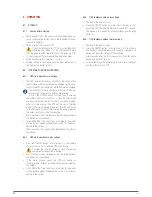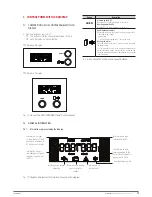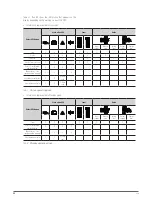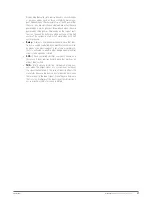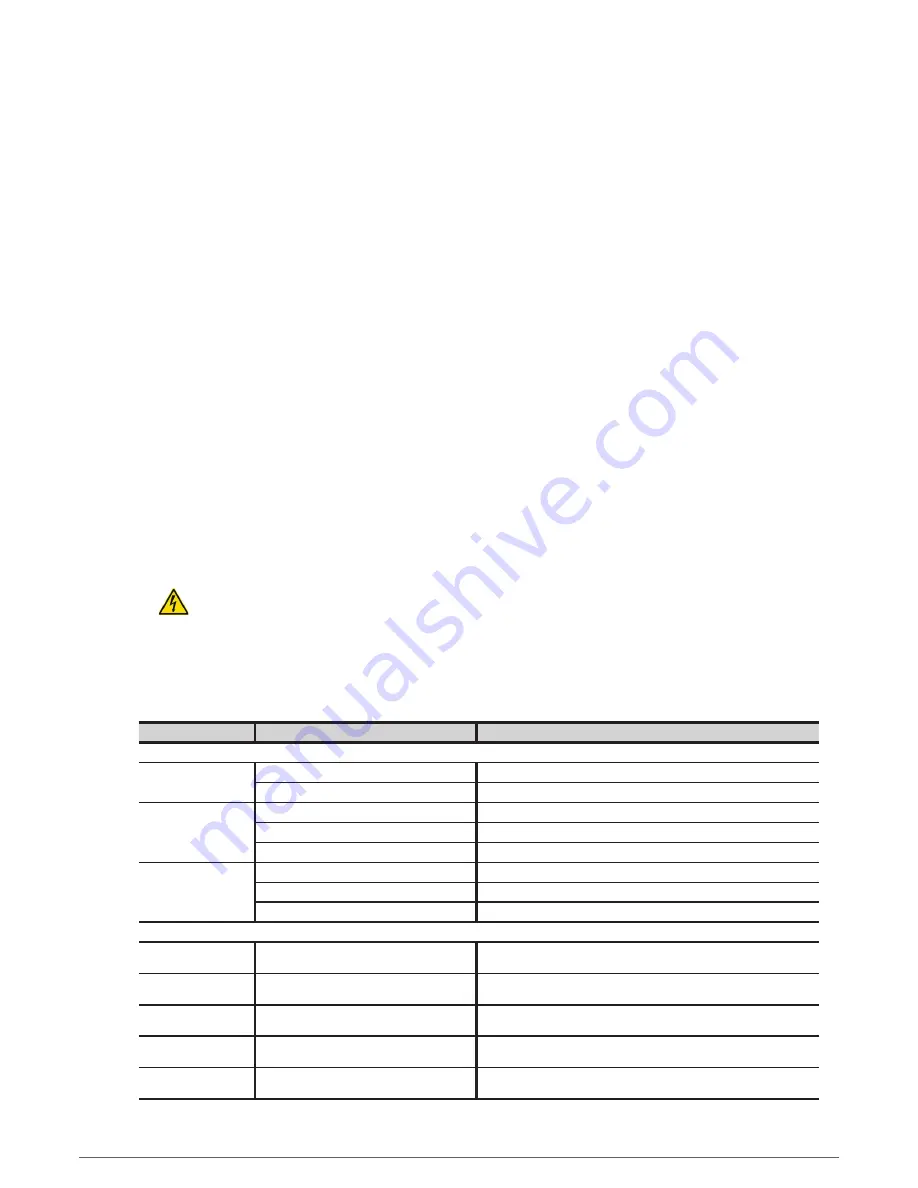
22
SALICRU
8. MAINTENANCE, WARRANTY AND SERVICE.
8.1. baTTery mainTenanCe.
•
Pay attention to all of the safety instructions concerning
batteries indicated in section 1.2.3 of manual ek266*08.
•
The service life of the batteries greatly depends on the am-
bient temperature and other factors such as the number of
charges and discharges, as well as their depth.
The service life is designed to be between 3 and 5 years if
the ambient temperature is between 10 and 20ºC. different
types of battery with different service lives are available
upon request.
•
SPS.AdAvAnCe R and T series UPSs require minimum up-
keep. The batteries used in the standard models are lead
acid, sealed, valve regulated and maintenance free. The
only requirement is to charge the batteries regularly to ex-
tend their life expectancy.
while it is connected to the mains supply, whether or not it
is running, it will keep the batteries charged and also offer
protection from overcharging and deep discharge.
8.1.1. notes for the installation and replacement of the battery.
•
If it is necessary to replace any connection cables, original
materials can be purchased through our
T.S.S.
or autho-
rised distributors. Using inappropriate cables can lead to
overheating in connections, which is a fire hazard.
•
Inside the device, there are permanent dangerous
voltages even without mains supply present through
its connection with the batteries and especially in UPSs
where the electronics and batteries share a box.
Also take into consideration that the battery circuit is not
isolated from the input voltage, so there is a risk of dis-
charge with dangerous voltages between the battery termi-
nals and the earth terminal, which is in turn connected to
earth (any metal part of the device).
•
Repair and/or maintenance work must be carried out by our
T.S.S.
, except for the replacement of batteries, which can
be performed by qualified personnel familiar with them. no
other person should handle them.
8.2. ups TroubleshooTing guide.
If the UPS does not work properly, check the information shown
on the LCd screen of the control panel and act accordingly de-
pending on the device model.
Using the Tab. 13 troubleshooting guide, try to resolve the issue
and, if it persists, consult our Technical Service and Support
T.S.S.
If it is necessary to contact our Technical Service and Support
T.S.S.
, provide the following information:
•
UPS model and serial number.
•
date on which the issue occurred.
•
full description of the issue, including information provided
by the LCd display or Leds and state of the alarm.
•
Power supply conditions, type of load and level of load ap-
plied to the UPS, ambient temperature, ventilation condi-
tions.
•
battery information (capacity and number of batteries), if
the device is (b1).
•
Any other information considered relevant.
Symptom
Possible cause
Solution
Abnormal
mains normal but does not
work in line mode.
no input voltage.
Check AC input connection.
Input protection tripped.
Unplug UPS power cord and then reset protection.
UPS does not start.
UPS not connected to an AC socket.
Unit must be connected to a 220-240v 50 / 60hz socket.
batteries damaged.
Contact distributor, seller or, failing that, our T.S.S.
UPS faulty.
Contact distributor, seller or, failing that, our T.S.S.
output sockets do not
supply power to the device.
Input protection tripped by overload.
disconnect non-essential loads from the device and reset input protection.
battery discharged.
Charge battery for at least 4 hours.
UPS faulty.
Contact distributor, seller or, failing that, our T.S.S.
Warning Codes
A56
Low battery voltage:
battery voltage too low, device will turn off.
Check AC input connection.
disconnect loads in battery mode.
A57
Low battery capacity:
battery capacity too low.
Check AC input connection.
disconnect loads in battery mode.
A59
disconnected battery:
device without connected battery.
Stop device.
Connect battery to device.
A62
faulty batteries:
battery damaged.
Stop device.
Change batteries.
A64
overload:
Loads excessive for device.
disconnect non-essential loads from device.











